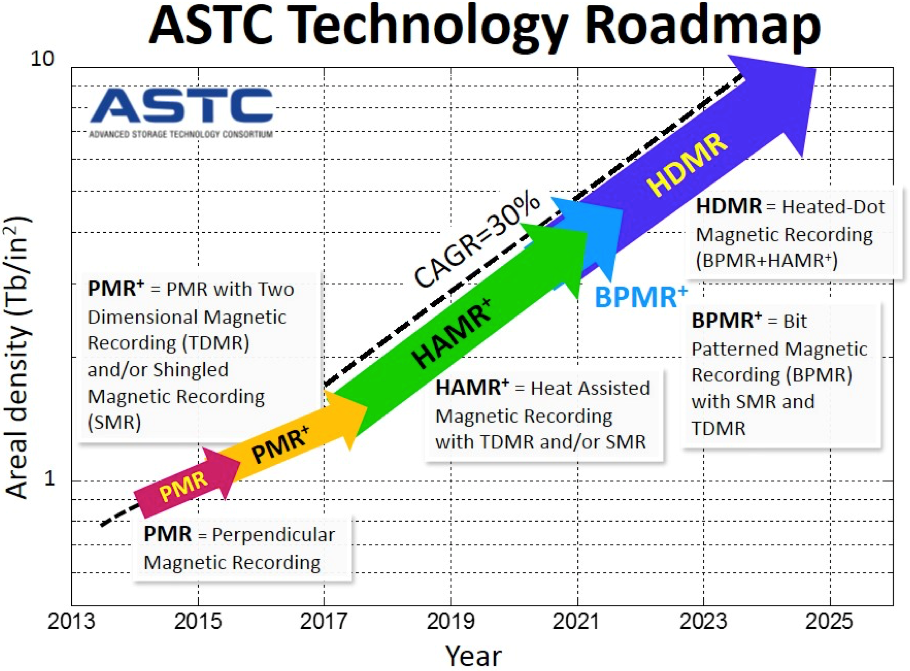60 years with hard drives
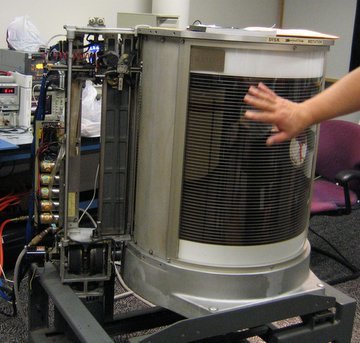 Thirty years ago, a hard drive was an expensive option. For decades he acquired the status of an everyday drive, there was even a reason to laugh - do you have a drive with a spinning disk in your computer? Why not flash memory, access to which is much higher?
Thirty years ago, a hard drive was an expensive option. For decades he acquired the status of an everyday drive, there was even a reason to laugh - do you have a drive with a spinning disk in your computer? Why not flash memory, access to which is much higher? For some six decades, the capacity of the hard disk has increased a million times, the cost of a megabyte fell a couple of million times, the speed of reading has increased a hundred thousand times. From the huge device for business applications, the hard disk has become commonplace of any home computing device.
In some categories, magnetized "pancakes" disappear in favor of flash memory, which, although more expensive, is faster and is not afraid of shaking. But in some places hard drives will dominate for a very long time.
Need
Before the appearance of the Moscow Metro, ordinary people moved on foot or on trams, although the congestion of the rapidly growing capital was felt. Approximately the same before the hard disk had its own methods of permanent data storage, which satisfied the basic needs, but were clearly insufficient for future computers.
To enter the program code manually each time is difficult and very inconvenient. Owners of cheap personal computers from the eighties would agree with this: they had to reprint many characters from a computer magazine, just to play their favorite toy once. Then look for a long time error in typed. And then once again enter the same program for re-play or for days to leave the computer on, so that the program does not reset.
The first device for reading and writing data for computers was not electromagnetic, but paper. Holes in punch cards of thin cardboard encoded information that was read by a computer. Some devices could punch information on unused punched cards. The reading speed was measured in cards per minute. A typical number is from 300 to 2000 cards / minute, that is, these devices could read a couple of thousand characters per second. The recording was slower - up to 300 cards per minute, about 400 characters per second.
After the Second World War, the magnetic tape zagged, formerly a German military secret. Like sound, information can be recorded on a magnetic tape for later reading; it will remain there even after a power outage. This carrier for the first time for commercial computers used inI of the UNIVAC . Rows of machines with spinning reels of magnetic tape forever crashed into public perception as the computers of the sixties. This method is already faster: up to 10 UNISERVO tape drives were stored on a half-inch magnetic tape of 128 bits per inch. The read and write speed was 7,200 characters per second - much higher than punched tapes and punched cards. The magnetic tape has one big disadvantage: data from such media must be read sequentially. To achieve the desired fragment, the tape must be rolled, which affects the speed of response.

With a better access speed from the progenitor of the hard disk - magnetic drum. Such a drive looked like a rapidly rotating metal cylinder coated with a ferromagnetic layer. In most of the designs, several fixed read heads write or read data from magnetic tracks located on the outer surface. Magnetic drums were often RAM, sometimes acting as an external drive. In this instance, many of the 192 heads touched the surface of the drum - a danger familiar to hard drives. Approximate capacity: quarter of megabyte. Kreg Steppe . As RAM, the drums forced out the memory on the magnetic cores. For external memory, a new drive appeared, where the read heads worked with a magnetic plate surface.
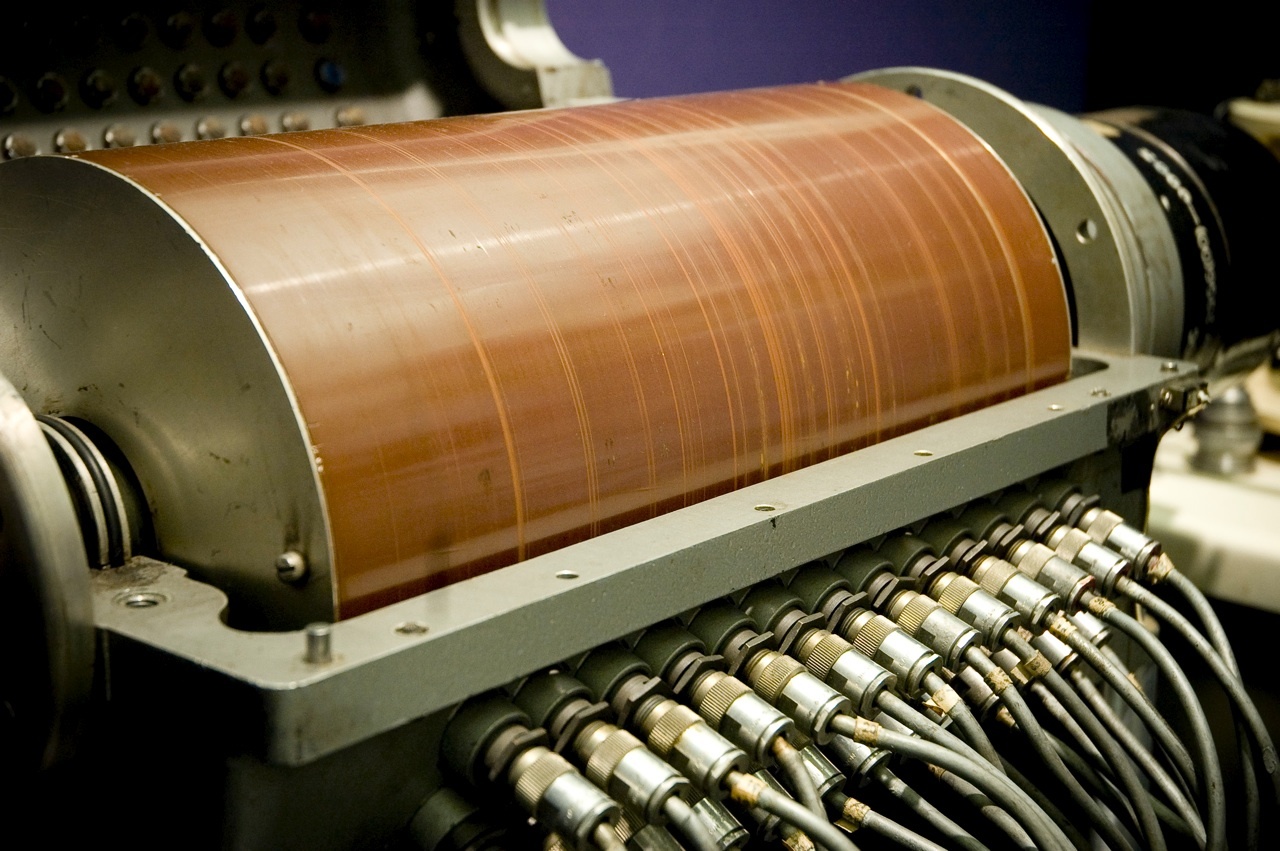
Birth
Many good things in the world of computing, which are now considered the standard, first appeared in IBM. Later, the giant sold units due to increased competition. The same fate befell the hard drive: he was born in IBM in 1956, for many years was one of the leading products of the company, but later, in 2002, production facilities were sold to Hitachi Global Storage Technologies.
The father of the hard drive is often called Reynold Johnson . Prior to HDD, he had already worked with data storage systems: he invented the mark sense system , which made it possible to mark data on cards with cards that were converted into punch cards. In 1952, IBM, a company from the state of New York, sent Johnson to the city of San Jose in California to create a laboratory on the West Coast of the United States.
IBM promotional material about new lab achievements.
By 1954, the Johnson team invented a new type of carrier. It was first introduced on September 13, 1956. Probably, this day can be considered the birthday of the hard disk. It was a machine consisting of 50 aluminum plates with a diameter of 24 inches (≈61 centimeters). It contained only 5 million 6-bit words - 3.75 megabytes. Today, this is not the size of a bloated web page on the Internet . The same, often demonstrated photo: loading IBM 305 RAMAC in the plane. Explicitly staged photograph to show off: for loading you need to turn around 180 °. It is unlikely that a team of loaders will be able to pick up a box weighing a ton.
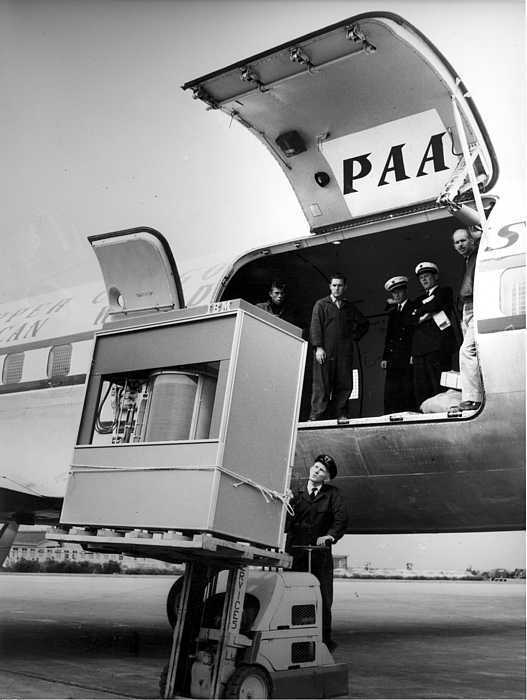
IBM did not sell components, but ready-made computers. The IBM 350 device — the same hard drive — was one of the parts of the IBM 305 RAMAC computer. As the name Random Access Method of Accounting and Control suggests, it was a solution for managing and maintaining financial reporting in enterprises. The first engineering prototype of the disk appeared in June 1956, the real commercial deliveries of the system began in January 1958.
50 plates of two surfaces for recording, coated with a ferromagnetic layer. Only 100 layers for recording, on each layer - 100 tracks. The discs rotated at 1200 revolutions per minute. The access speed was 8.800 6-bit words per minute (approximately 51 KB / s). There was only one pair of heads for reading and writing, which a special mechanism pushed up and down to select the desired plate. This design with heads weighed about 1.4 kg, but could slip from the top to the bottom plate in less than a second.
IBM educational film about the RAMAC computer. Visible hard drive.
Computer IBM RAMAC 305 with one such disk IBM 350 was provided for a fee of $ 3200 per month (similar to about $ 27 thousand today). The engineers wanted to make the version with a higher capacity, but marketers did not know why anyone would need it.
Thirty years later
The new IBM computers contained larger capacity hard disk drives. Immigrants from the company and other experts created their enterprises for the production of new items.
The era of large computers, accessible only to large enterprises, was leaving. It was still far from public access, but the first personal computers gradually appeared. At first they were weak machines without a graphical interface. The amount of RAM grew, the processors became more powerful, window systems were born.
The 5.25-inch ST-506 from Shugart Technology (now Seagate) is unwinding. 5 megabytes, 1500 dollars. 1980 year.
But in the early eighties the drive of the first microcomputers most often were floppy disks, cartridges, or magnetic tape. In extreme cases, the program had to be typed into the memory of the computer itself. Hard drives were expensive. Often they looked like external devices connected separately. For example, the original Macintosh ($ 2495, 1984) only had a floppy disk drive. An Apple ProFile hard drive was connected to an expensive Apple Lisa ($ 9.995) , which cost $ 3499.
The price of hard drives was comparable to the cost of computers, there were a lot of connection standards. The number of manufacturers grew: among them were not only the familiar today Seagate, Western Digital, but also Rodime, Shugart Associates and Control Data. Many of them collaborated and developed unified connectivity standards: SCSI, 40-pin IDE and ESDI . Following the size of the floppy disks, the hard drives became smaller: 5.25 inches, after the manufacturers mastered the 3.5-inch standard, then tried 2.5-inches.
Sounds of a 3.5-inch Western Digital WD93028-X. 20 megabytes, 1989
By 1985, the number of participants in the hard drive market had reached 75. Since then, it has fallen by takeovers, mergers and bankruptcies. By the end of the eighties, the hard drive had fallen in price, and began to meet as a standard in the computer. By the end of the eighties, the cost of a megabyte of storage fell below fifty dollars. The 20-megabyte Western Digital disk in March 1989 cost only $ 899. At the beginning of the decade, the drive of a similar volume was four times more expensive.
Sixty years later and on
By 1999, the number of manufacturers fell to 15. In 2009 there were 6. Today, only three companies in the world produce hard drives.
In sixty years, the capacity of a hard disk has reached a dozen terabytes. If it were a question of a car, then for sixty years of development a small city would fit in a four-door sedan, and it would be worth as a matchbox.
The capacity of the plates is growing at the expense of various tricks. The plates of the first hard disks were covered with one magnetic layer, today there are much more of them, and each performs its own function. The heads with the tunnel magnetoresistive effect replaced the heads based on the effect of giant magnetic resistance. Heads write data not horizontally, but vertically, which allows to increase the recording density. The core of some disks is filled with helium to increase the number of plates. For decades, the hard drive began to decrease to unimaginable sizes. There are disks with a diameter of an inch or less . It seemed that hard drives would be in every device: from 3.5-inch porn-sized in stationary computers to mobile phones. Reality decreed otherwise.

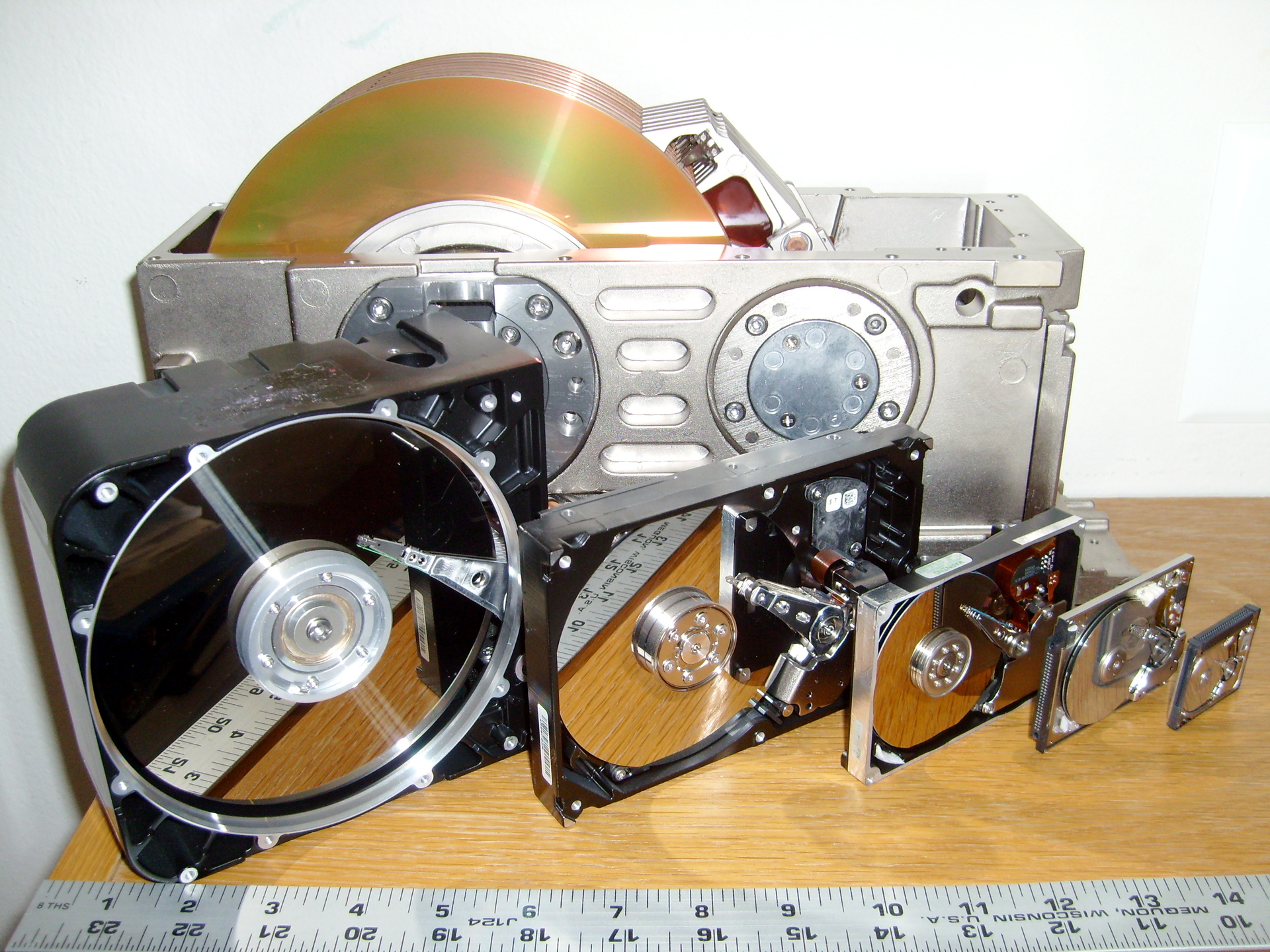
Six formats: 8-, 5.25-, 3.5-, 2.5-, 1.8- and 1-inch hard drives.
Today, flash memory, made in the form of chips without moving parts, is getting cheaper. At first she put an end to tiny hard drive formats in audio players, then began to appear in laptops and desktops. The disks on it are faster, consume less energy, are quieter at work and are not afraid of shaking. There are no moving parts - the response is much lower. Solid state drives are still more expensive, and their cells have a limited rewriting resource. However, the price continues to fall, and there are plenty of cycles for a hard-tapper to write to an impatient user to replace gadgets.
Still, in the near future, hard drives will not go anywhere. They will serve the world for more than one decade, and may remain as an archive format for a long time. The tape, which seems to have disappeared, still exists as an archival drive. Sometime hard drives may be threatened with something like this — a few highly professional applications. The manufacturers themselves say that the thermally-assisted magnetic recording and its further development will allow the hard drives to remain competitive for another twenty years. Perhaps in ten years the usual hard disk will fit a hundred terabytes.
